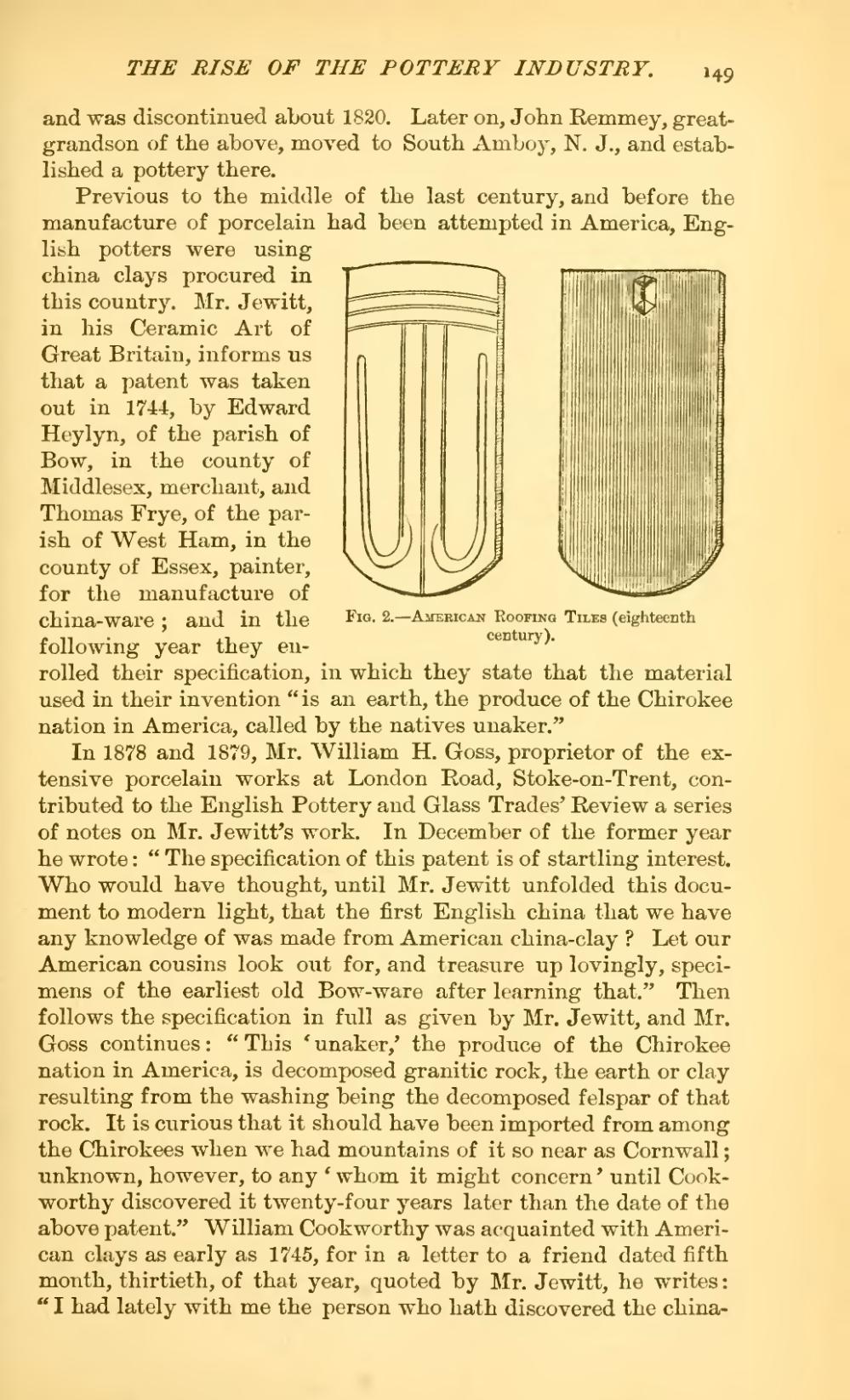and was discontinued about 1820. Later on, John Remmey, great-grandson of the above, moved to South Amboy, N. J., and established a pottery there.
Previous to the middle of the last century, and before the manufacture of porcelain had been attempted in America, English  Fig. 2.—American Roofing Tiles (eighteenth century). potters were using china clays procured in this country. Mr. Jewitt, in his Ceramic Art of Great Britain, informs us that a patent was taken out in 1744, by Edward Heylyn, of the parish of Bow, in the county of Middlesex, merchant, and Thomas Frye, of the parish of West Ham, in the county of Essex, painter, for the manufacture of china-ware; and in the following year they enrolled their specification, in which they state that the material used in their invention "is an earth, the produce of the Chirokee nation in America, called by the natives unaker."
Fig. 2.—American Roofing Tiles (eighteenth century). potters were using china clays procured in this country. Mr. Jewitt, in his Ceramic Art of Great Britain, informs us that a patent was taken out in 1744, by Edward Heylyn, of the parish of Bow, in the county of Middlesex, merchant, and Thomas Frye, of the parish of West Ham, in the county of Essex, painter, for the manufacture of china-ware; and in the following year they enrolled their specification, in which they state that the material used in their invention "is an earth, the produce of the Chirokee nation in America, called by the natives unaker."
In 1878 and 1879, Mr. William H. Goss, proprietor of the extensive porcelain works at London Road, Stoke-on-Trent, contributed to the English Pottery and Glass Trades' Review a series of notes on Mr. Jewitt's work. In December of the former year he wrote: "The specification of this patent is of startling interest. Who would have thought, until Mr. Jewitt unfolded this document to modern light, that the first English china that we have any knowledge of was made from American china-clay? Let our American cousins look out for, and treasure up lovingly, specimens of the earliest old Bow-ware after learning that." Then follows the specification in full as given by Mr. Jewitt, and Mr. Goss continues: "This 'unaker,' the produce of the Chirokee nation in America, is decomposed granitic rock, the earth or clay resulting from the washing being the decomposed felspar of that rock. It is curious that it should have been imported from among the Chirokees when we had mountains of it so near as Cornwall; unknown, however, to any 'whom it might concern' until Cookworthy discovered it twenty-four years later than the date of the above patent." William Cookworthy was acquainted with American clays as early as 1745, for in a letter to a friend dated fifth month, thirtieth, of that year, quoted by Mr. Jewitt, he writes: "I had lately with me the person who hath discovered the china--

